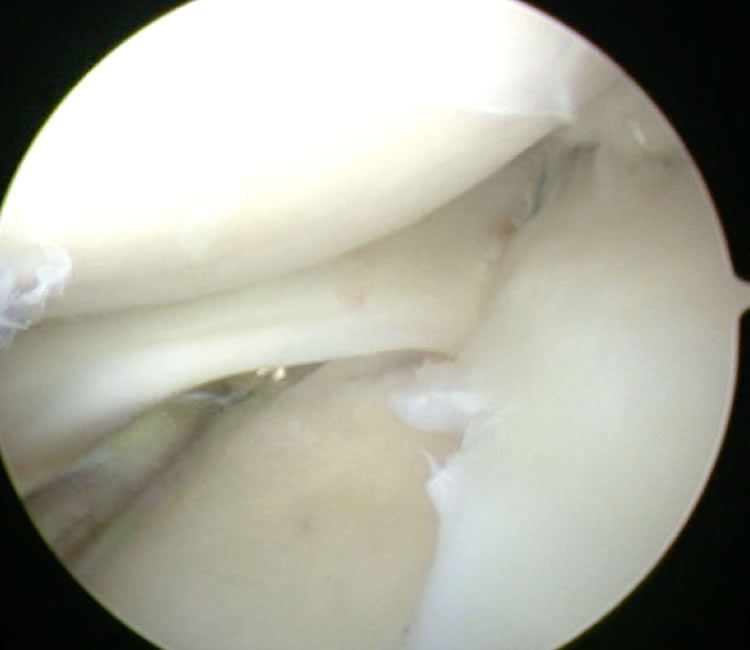Meniscal Injuries
The menisci are C-shaped specialised collagen discs that help protect the knee joint from excess load and stress.
The menisci are under extreme load when the knee is flexed deeply and when the knee is twisted. It is often in these positions that the menisci can be torn.
The symptoms and signs of meniscal tears include pain in the inner or outer aspect of the knee, swelling, a click in the knee, the knee giving way and in cases of large tears the knee can be locked in position.
The diagnosis of a meniscal tear normally requires an x-ray to exclude a bone fracture and an MRI scan to confirm and identify the tear.
Meniscal tears can be acute (occur suddenly) or chronic (in degenerative menisci).
Some meniscal tears may be identified co-incidentally on an MRI scan of the knee for another reason.
If the patient has no signs or symptoms of a meniscal tear then no treatment is required.
If a meniscal tear has been diagnosed and the patient has positive signs or symptoms then the treatment is normally surgical.
The surgery for meniscal tears includes either removal of the tear (partial meniscectomy) or repair of the tear (meniscal repair).
Pre operative MRI scan demonstrating bucket handle tear of the medial meniscus Arthroscopic Partial.
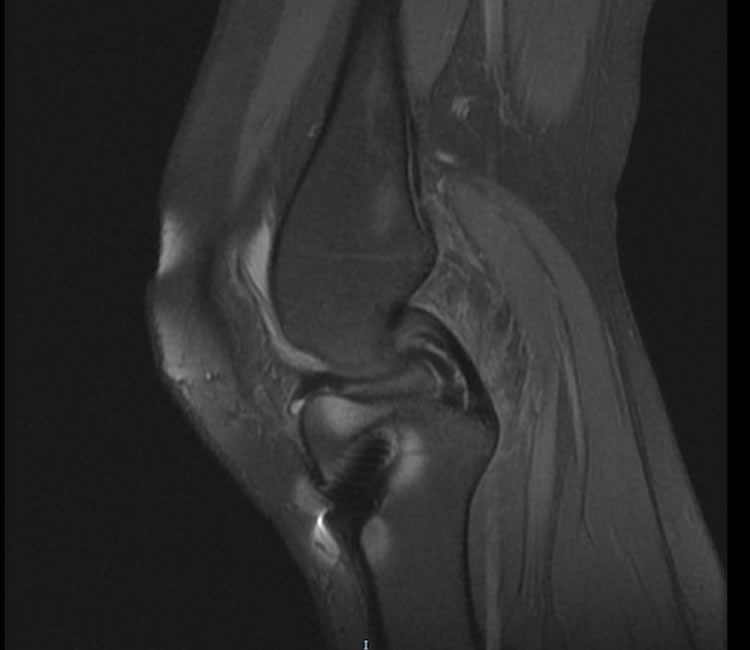
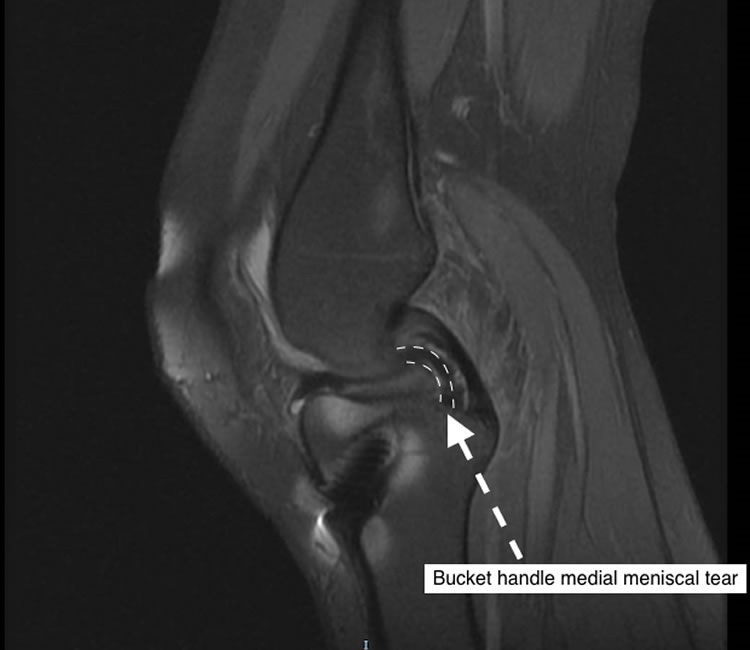
Arthroscopic Partial meniscectomy
In this minimally invasive keyhole surgical procedure the knee joint is inspected to identify any other injuries. The meniscal tear is identified and its stability assessed. Unstable torn tissue not amenable to repair is removed with a combination of specialised tools. The surgery is normally performed as a day case under general anaesthetic. The patient is normally discharged with crutches and can weight bear fully (as the pain allows) and discard the crutches after three days. In some circumstances in which a large amount of meniscal tissue has been removed the crutches may be required for a period of three weeks. The sutures used to close the small skin incisions can be removed after two weeks.
Meniscal repair
In specific circumstance a meniscal tear may be suitable for acute repair rather than removal. This is a specialist technique which can be performed as an arthroscopic (keyhole) operation. The tears suitable for repair are ideally acute, the meniscal tissue is healthy and the tear is of an appropriate geometry. If at all possible it is ideal to try and repair and preserve a patient's own meniscus.
The surgery is performed arthroscopically (keyhole). The meniscal tear is identified and if deemed suitable for repair a small needle is used to stimulate bleeding at the site of the tear and the meniscal tear is reduced back into its anatomical, natural position and fixed with specialised suture knots. In most cases the sutures used are specifically designed to self knot, but certain meniscal tears may require additional small cuts to be made around the knee joint to allow sutures to be passed and the knot tied.
After surgery patients may go home the same day or require one overnight stay.
A knee brace is required for the first six weeks after surgery. The knee must not be flexed more than 90 degrees in this period. Full weight bearing is allowed with the brace locked in 0 degrees extension.
An exercise bike can normally be commenced at 4 weeks after surgery.
At six weeks after surgery the brace is removed and knee is allowed to flex fully when lying, but must not be flexed more than 90 degrees when standing (ie no deep squats) for a further six weeks.
Running is normally commenced after twelve weeks and contact sports begun again at six months if the muscles around the knee joint are well conditioned.
Intra-operative view of bucket handle tear of the medial meniscus
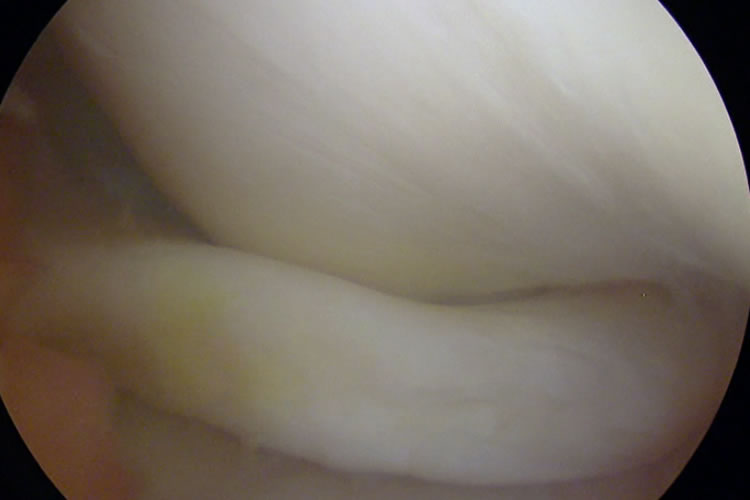
Bucket handle tear being manipulated with arthroscopic probe
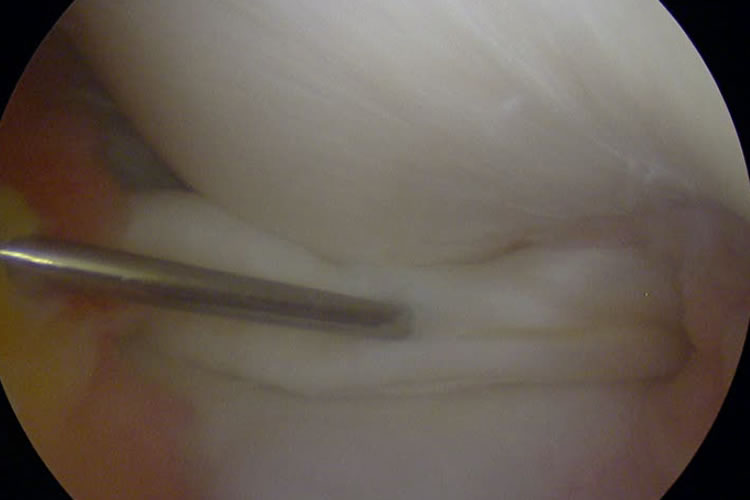
Medial meniscus reduced back into joint and natural position
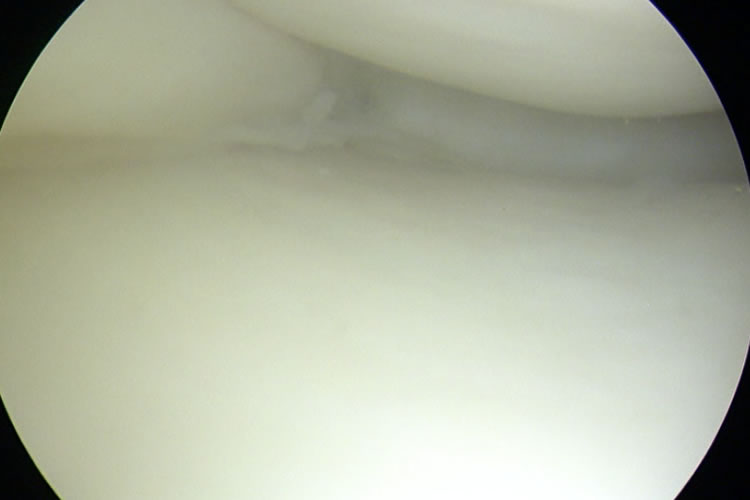
Arthroscopic suture passed to repair meniscus back to the joint capsule
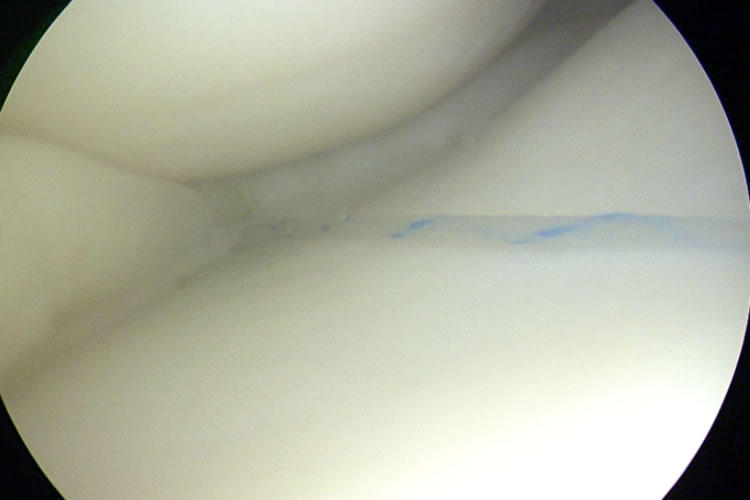
Final view of medial meniscus at the end of the arthroscopic surgical repair
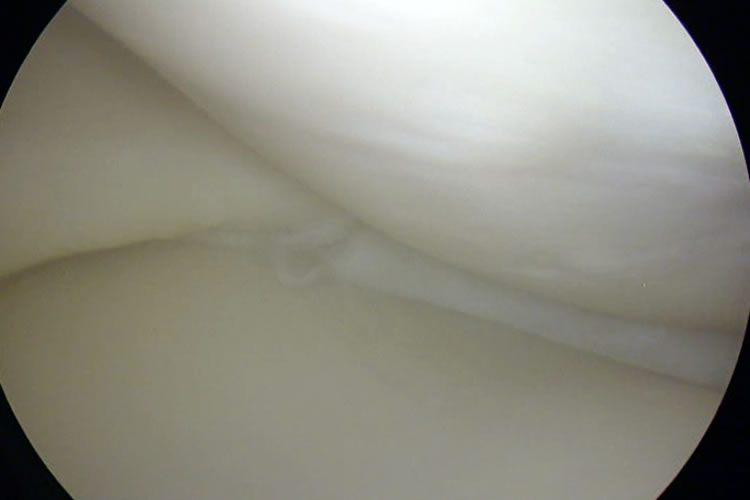
Arthroscopic view of acute medial meniscal tear
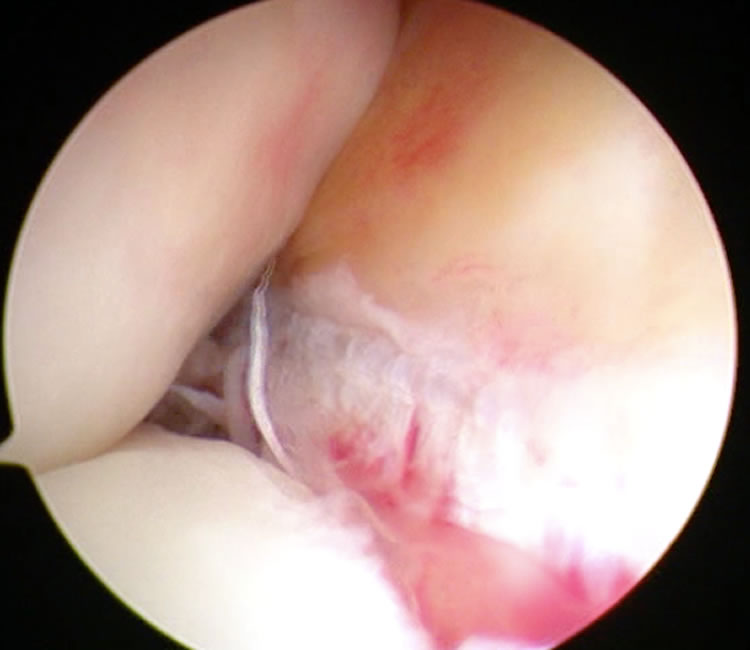
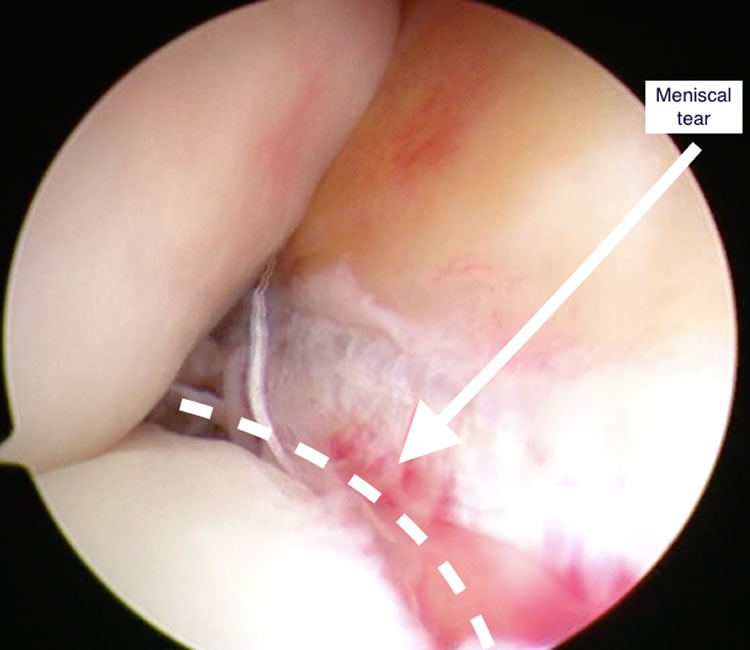
Arthroscopic view post medial meniscal repair
